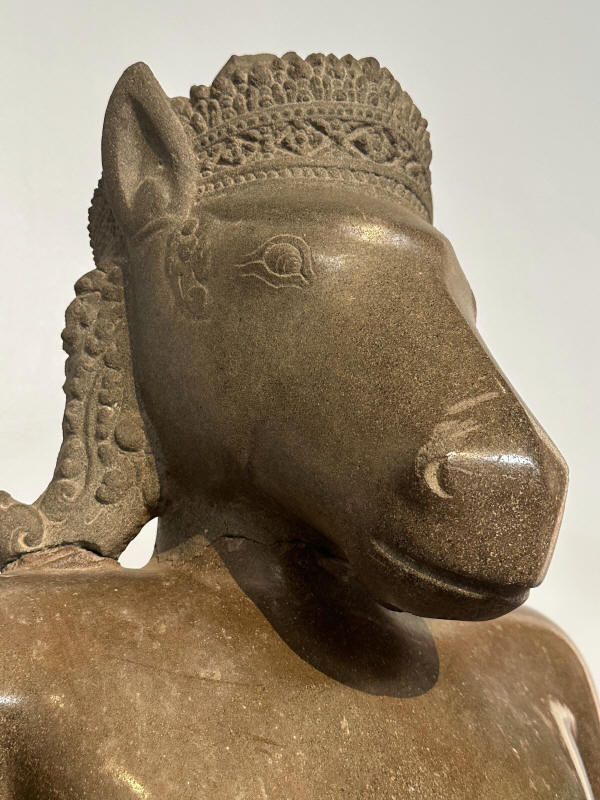
Before I start, I want to provide a little context. Our big
trips are what I would call “Adventure Travel.” That is a
type of tourism that involves exploration or travel to remote, exotic,
or off-the-beaten-path destinations, with a focus on experiencing unique
activities and engaging in physically challenging or culturally
immersive experiences. It emphasizes personal growth, excitement, and a
sense of discovery.
It’s not always “fun.”
So, you could
say what follows in a sound bite would be “it sucked.” But,
really, the point is that it was a Cambodia deep dive, with the good,
the bad, and the ugly. Phnom Penh and southern Cambodia was
mostly “the ugly.”

Phnom Penh is the capital of Cambodia. It’s not really a great place to visit, and you definitely don’t want to live there. The pace is frantic, but it feels more like the desperate actions of people on the edge of starvation than entrepreneurship. It’s dirty, a common affliction of most of southern Cambodia. People just throw trash in the street, in fields, in yards. The air is hazy, a combination of humidity, smoke and pollution. Government buildings are large and ornate, and there are a few skyscapers and nice nieghborhoods, but most other buildings are run down, tiny, and crammed together. You can feel the life blood of the population being sucked into the maws of a few government officials, who populate the ministries, police and other agencies with their sons and family members. Because of the Khmer Rouge, the country is seriously lagging in any kind of health care facilities and knowledge. People with money go to other countries for treatment. Those who don’t – well, there’s no safety net for anything. If you have a serious health problem, you die.
 Average road in southern Cambodia |
 Sides of every major road where packed with stalls |
 |
 |
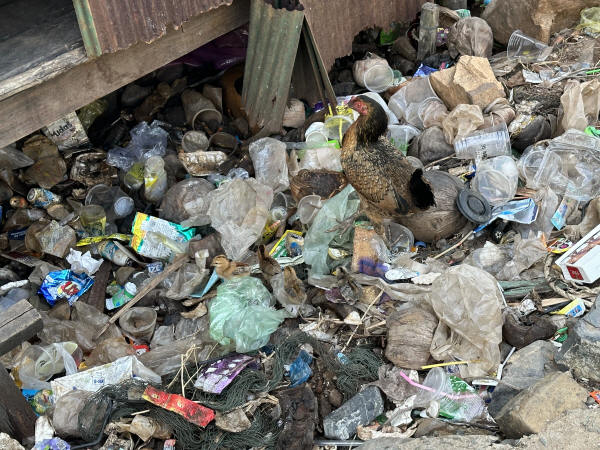 Trash was everywhere |
 A regular Tuk-Tuk taxi for getting around town |
So having started off on that depressing note, let’s get the Genocide Museum and the Killing Fields over with. I’m not going to go into it in any detail; in fact, I’m not really going to talk about either of them, other than to say it’s truly depressing to see what people can do to each other, and for no reason. Nothing the Khmer Rouge did made sense. This wasn’t even a path to power by creating a convenient scape goat to rally people around. It was a demented psychopath with a crazy, flawed idea of what an ideal society should look like. And people followed him, killing a quarter of the population and plunging the entire country into its own version of the dark ages over it. The only glimmers of light in this otherwise dark story are the tales of those who survived it and the people that helped them at great personal risk.
Depressing doesn’t describe it.

But on to happier topics.
We did see the Royal Palace, which was interesting. The royal family are figureheads, but like with the UK, there’s some level of prestige and history that is worth seeing.
 |
 |
||||
 |
 |
||||
 |
 |
||||
 |
 |
||||
 | |||||
 |
 |
||||
|
|
||||
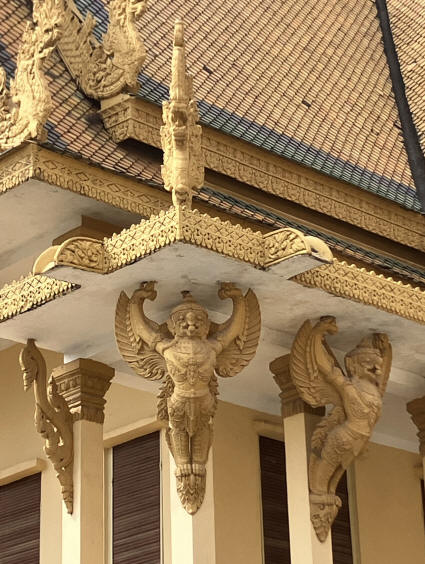 |
 |
We went to the National Museum, which housed several statues from the Angkor temple complex without much in the way of context, and a few other odds and ends. Again, without any descriptions, the relevance was a bit lost on us.
 |
 |
||
 |
|
||
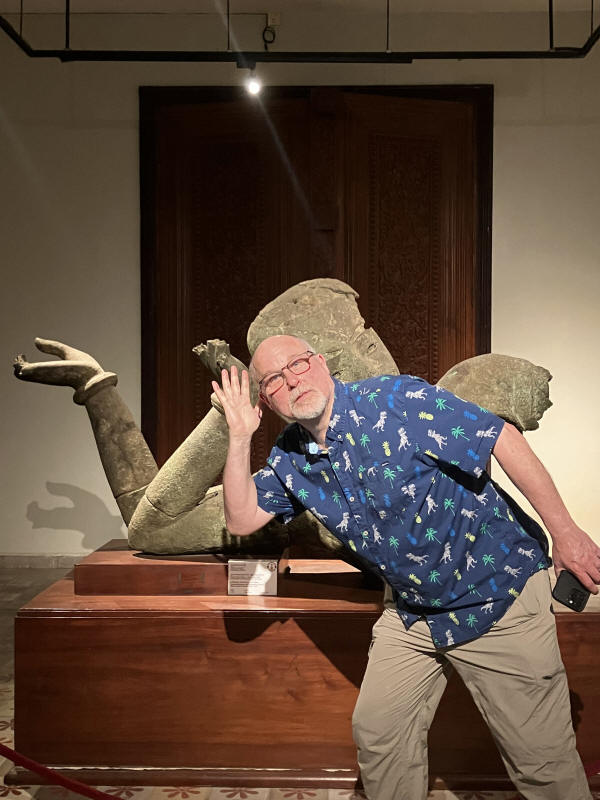 |
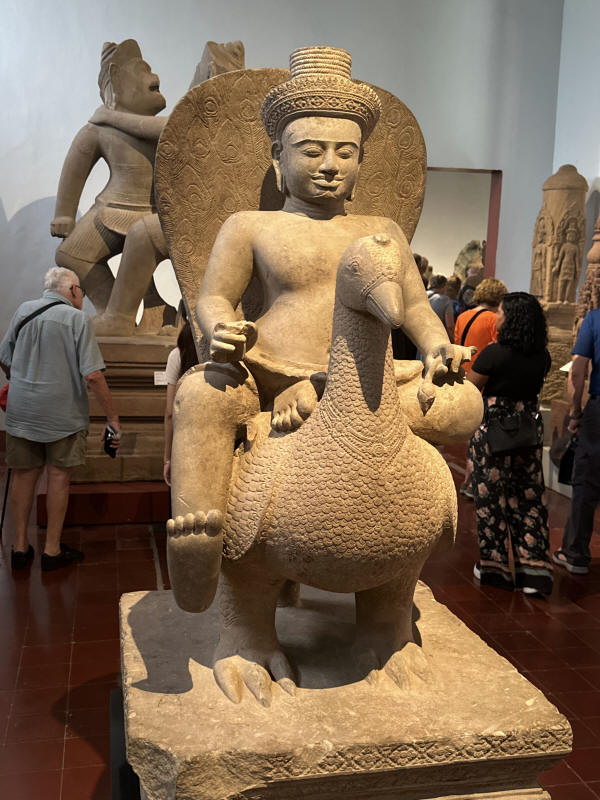 |
||
 |
 |
We did one adventure in dining thing that was quite fun; a tuk-tuk tour of street vendor food. We had two young guides (college students who were doing it as a sideline), and it was the real deal, where we were the only gringos around. I’m sure you could end up on the wrong side of a stomach bug if you just randomly sampled things, but we went places that had been in business for a long time, which doesn’t happen if you poison your customers. And, yes, speaking of stomach bugs, there was one vendor with grilled tarantulas, mung beetles, grasshoppers, frogs, and other delicacies (actually we were told the insect thing was from back in Khmer Rouge days when people had to eat anything that was remotely edible or starve, but the insect thing stuck). The guides told us that many Phnom Penh residents had no cooking facilities in their apartments and that there was always a lot of turnover for the popular places, so the street vendor food was in general pretty safe anyway.
 |
 |
 |
 |
 |
 |
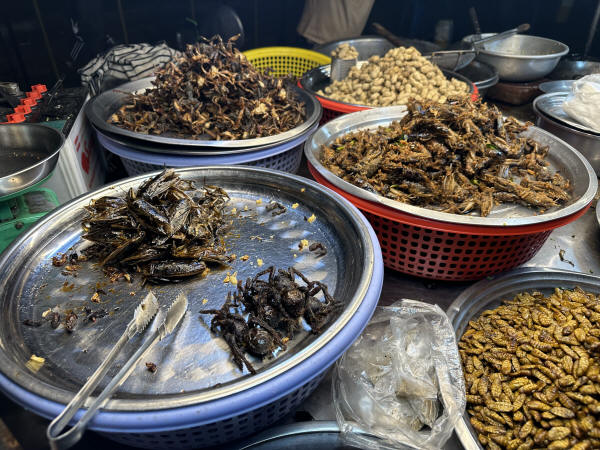 |
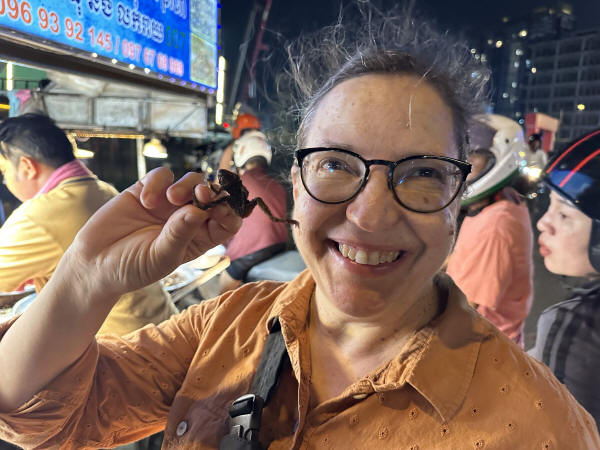 |
We visited Wat Phnom, which has a funny story associated with it. Phnom Penh literally means "The Hill of Penh." According to legend, a woman referred to as Madame Penh founded Phnom Penh in the fourteenth century. She discovered five Buddha statues inside a tree floating on the river and had a small hill made from piles of earth and built a temple on it to house the statues. We saw the hilariously bad statue of her with money stuffed into cracks and visited the Buddhist temple on the top of the hill (which one would assume is the one from 600 years ago, but hard to say). There were also trees full of giant bats that was a little unusual (well, for us at least).
The temple itself was half a pachinko parlor and half a temple (not really a pachinko parlor, it just had bright neon flashing lights that looked that way). There were lion statues with eggs and bacon stuffed in their mouth, a giant clock and a equally giant rabbit. Exactly how to connect those dots is unclear.
 bats |
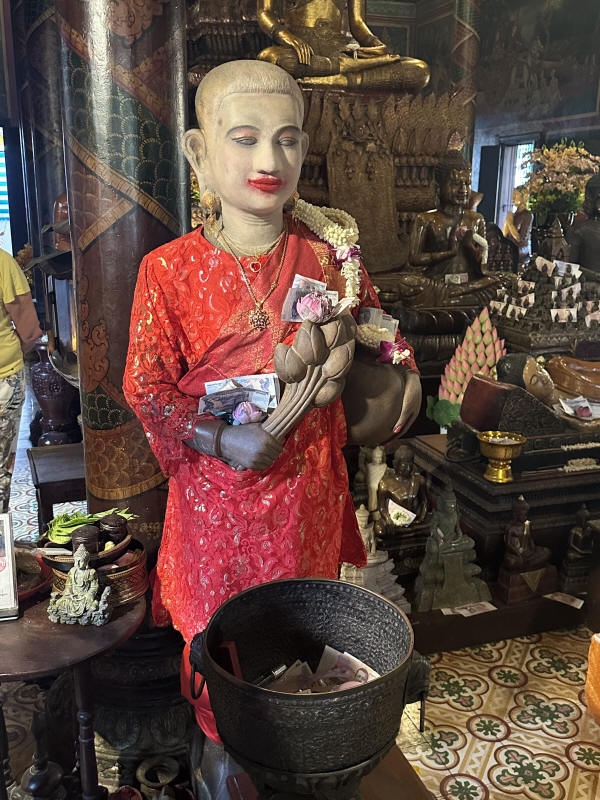 Madame Penh |
 |
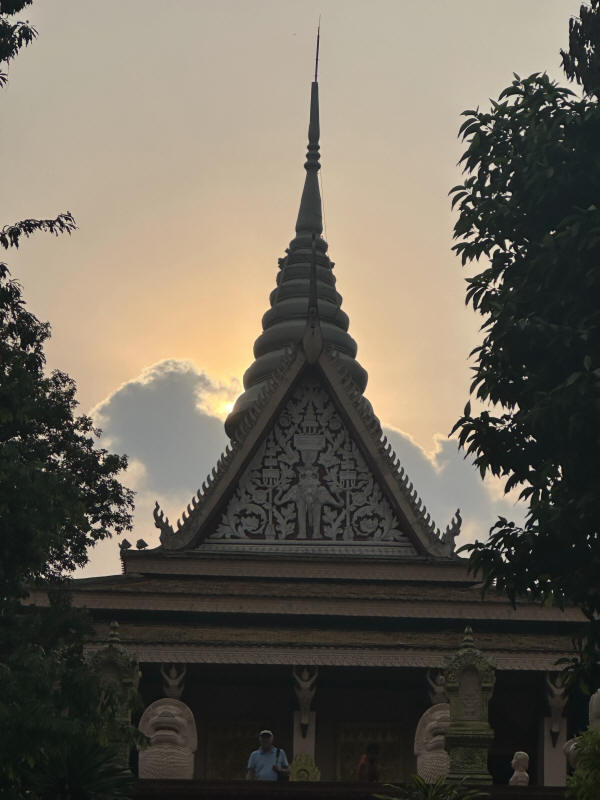 |
 |
 |
 |
 |
 |
 |
| Back to the main page | On to Siem Reap / Angkor Wat |





